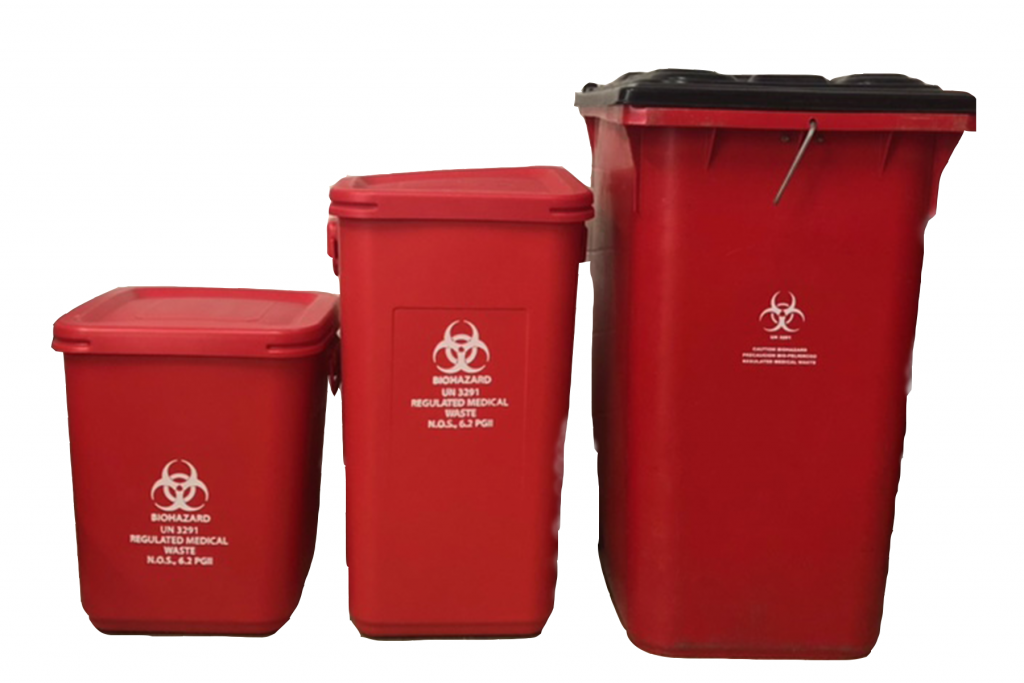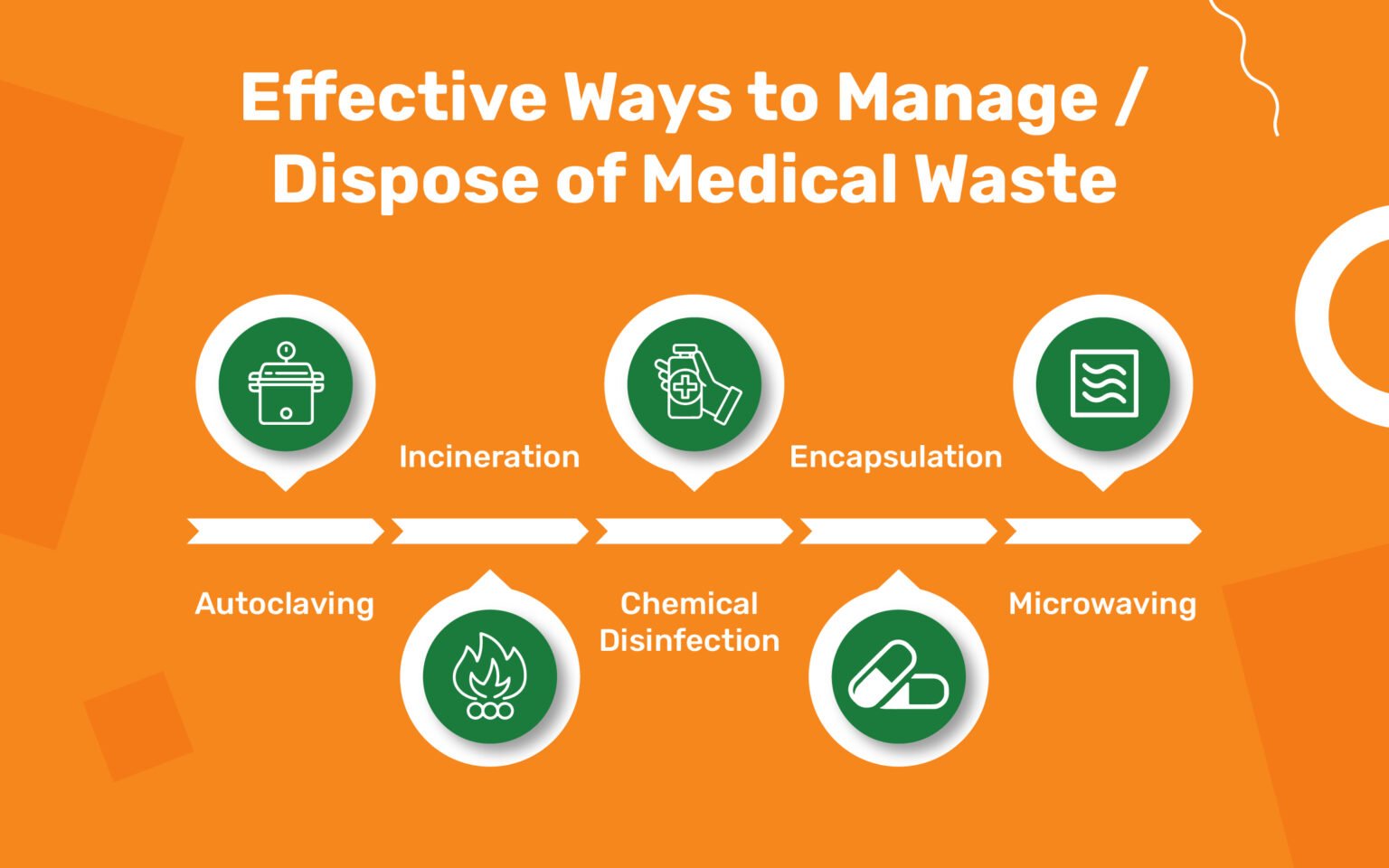Shielding Health: Specialist Medical Waste Removal Services for a Clean Environment
Shielding Health: Specialist Medical Waste Removal Services for a Clean Environment
Blog Article
Remain Ahead of Laws: Expert Guidance on Medical Garbage Disposal
In a world where the health care sector is continuously advancing, it is critical for clinical facilities to stay ahead of guidelines when it comes to the proper disposal of medical waste. With stringent guidelines and constant governing modifications, it can be challenging to browse the complexities of this process. With professional advice, facilities can make sure compliance and reduce risks associated with improper waste disposal. From understanding the different categories of clinical waste to applying the appropriate collection and segregation techniques, this conversation will certainly supply important insights and actionable tips to help facilities stay in advance of laws in the ever-changing landscape of clinical garbage disposal.
Understanding Clinical Waste Categories
Recognizing clinical waste groups is crucial for correct disposal and administration in medical care facilities. Clinical waste refers to any kind of waste produced by health care activities that might present a danger to public health or the environment. It is crucial to categorize clinical waste accurately to ensure its safe handling, disposal, therapy, and transportation.
There are a number of classifications of clinical waste that medical care facilities require to be accustomed to. One of the most usual categories include transmittable waste, pathological waste, sharps waste, pharmaceutical waste, and chemical waste. Each group has specific standards and policies for its proper management and disposal.
Pathological waste refers to human cells, organs, or body components that need unique handling and disposal. Drug waste makes up ended, extra, or infected medications that need careful handling and disposal.
Remaining Up-To-Date With Regulatory Adjustments
Remaining current with regulatory modifications is essential for health care facilities to make certain conformity and proper monitoring of clinical waste disposal. medical waste removal services. With laws regularly developing, it is crucial for medical care centers to remain up-to-date to avoid charges, penalties, and possible injury to the atmosphere and public health and wellness
To remain ahead of regulatory modifications, medical care facilities ought to develop a system for surveillance and monitoring updates. This can be done by registering for regulatory newsletters, participating in workshops and seminars, and proactively taking part in industry associations. In addition, facilities must assign a team member or group in charge of remaining notified and distributing details to appropriate stakeholders.
Normal communication with governing companies is additionally vital. Medical care centers ought to develop partnerships with neighborhood, state, and federal companies to ensure they are conscious of any kind of changes in laws that may influence their waste administration methods. This can be done through normal meetings, involvement in public remark durations, and aggressive interaction with regulative firms.
Furthermore, medical care facilities ought to take into consideration partnering with waste management business that concentrate on clinical garbage disposal (medical waste disposal services with WasteX). These business are frequently skilled in the most current laws and can provide support and support to ensure conformity
Applying Proper Collection and Segregation Techniques
To efficiently manage clinical waste disposal, healthcare facilities must develop appropriate collection and segregation methods according to regulative guidelines. Applying these methods ensures the safe handling and disposal of possibly hazardous products, shields the setting, and lessens the threat of infections and injuries to medical care workers and the public.
Appropriate collection and segregation techniques involve using marked containers and classifying systems. Healthcare centers must offer plainly classified containers for various sorts of clinical waste, such as sharps, infectious waste, pharmaceutical waste, and non-hazardous waste. These containers must be color-coded and plainly marked to prevent confusion and advertise very easy identification.
In addition, health care facilities need to educate their team on the right treatments for accumulating and segregating clinical waste. This consists of enlightening them on the different kinds of waste, the proper containers to utilize, and the relevance of adhering to policies and guidelines. Regular training sessions and refresher course training courses should be performed to ensure that team member stay up-to-date on ideal practices.
Furthermore, health care centers ought to establish a system for normal collection and disposal of medical waste. This might include partnering with qualified waste monitoring companies that focus on medical garbage disposal. These firms will guarantee that the collected waste is carried and disposed of in compliance with governing requirements.
Picking the Right Disposal Techniques
Incineration is among one of the most typical and effective methods for dealing with certain kinds of medical waste, such as pathological waste and sharps. It involves the regulated burning of waste at heats, minimizing it to ash. Incineration can launch damaging toxins right into the air and contribute to air pollution.

Other disposal approaches consist of chemical therapy, microwave treatment, and landfilling. Chemical therapy includes the usage of chemicals to disinfect and neutralize the waste. Microwave therapy uses microwave energy to warm and sanitize the waste. Landfilling includes burying the waste in an assigned landfill location (medical waste disposal services with WasteX). Landfilling must be the last resort due to the possible danger of contamination to soil original site and groundwater.
Making Sure Compliance With Documents and Training
After carefully thinking about the suitable disposal techniques for clinical waste, health care centers need to make certain compliance with regulations and lessen ecological influence by executing efficient documents and training treatments. This action is vital in maintaining a lasting and risk-free atmosphere for both medical care workers and the public.

Medical care workers that deal with medical waste needs to receive appropriate training on waste segregation, handling, and disposal procedures. By giving comprehensive training, the original source health care centers can encourage their team to make enlightened choices and decrease the risk of incorrect waste disposal.
Final Thought
In verdict, staying ahead of policies in clinical garbage disposal is essential for healthcare centers. medical waste removal service. Understanding the various groups of clinical waste, staying updated with regulatory modifications, carrying out proper collection and segregation approaches, picking the suitable disposal methods, and making certain compliance with documentation and training are all crucial actions. By complying with these guidelines, health care companies can successfully take care of and get rid of of clinical waste in a risk-free and accountable way
From understanding the different categories of medical waste to applying the ideal collection and partition methods, this conversation will certainly give workable pointers and important understandings to aid centers stay in advance of policies in the ever-changing landscape of medical waste disposal. - medical waste disposal services with WasteX
The most usual categories consist of contagious waste, pathological waste, sharps waste, pharmaceutical waste, and chemical waste. Health care centers must give plainly labeled containers for different kinds of medical waste, such as sharps, contagious waste, pharmaceutical waste, and non-hazardous waste. Medical care centers need to establish a detailed system to go to website tape and track all facets of clinical waste disposal, including types of waste generated, quantities, and disposal methods used. Healthcare employees that deal with clinical waste needs to obtain proper training on waste partition, managing, and disposal treatments.
Report this page